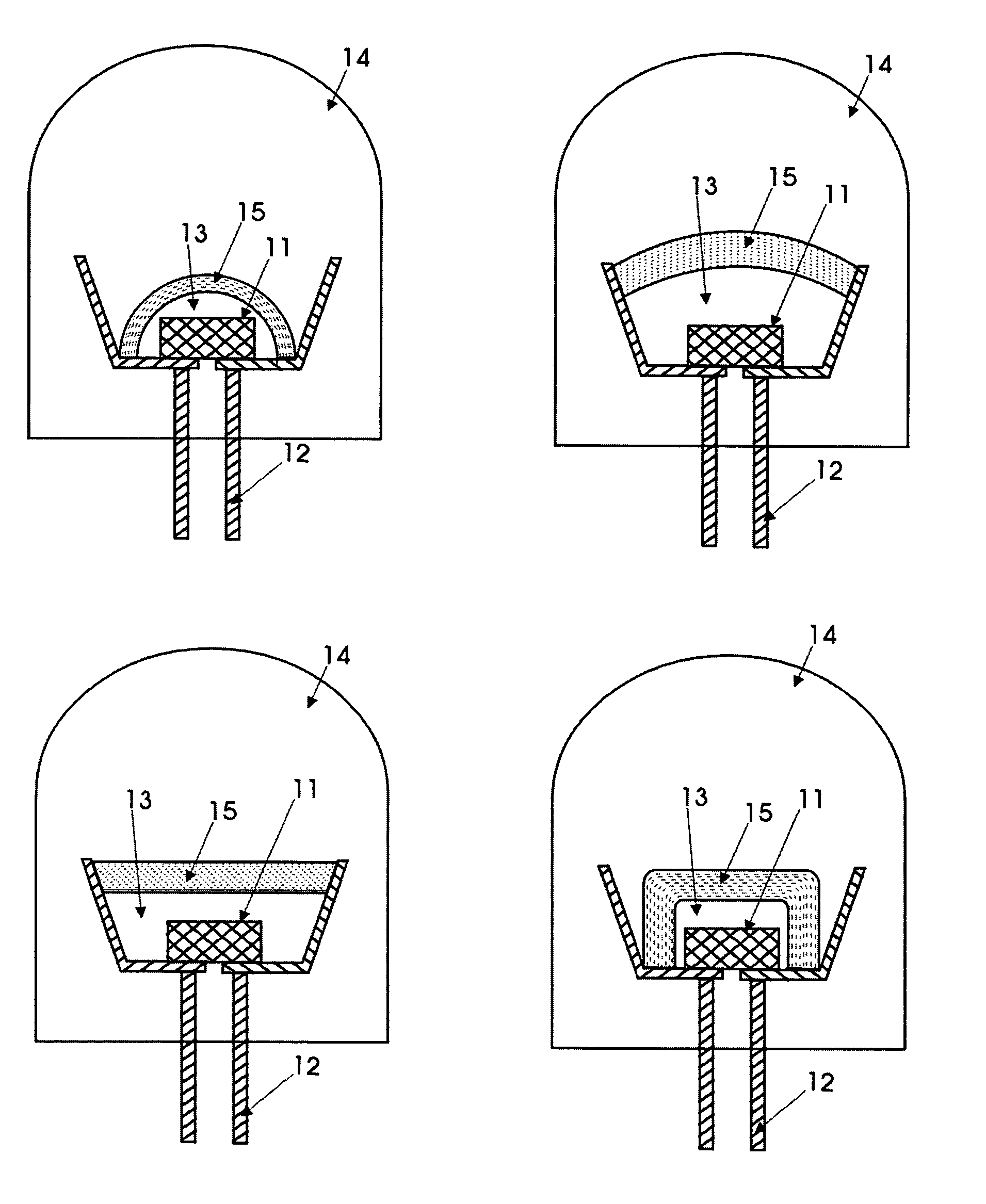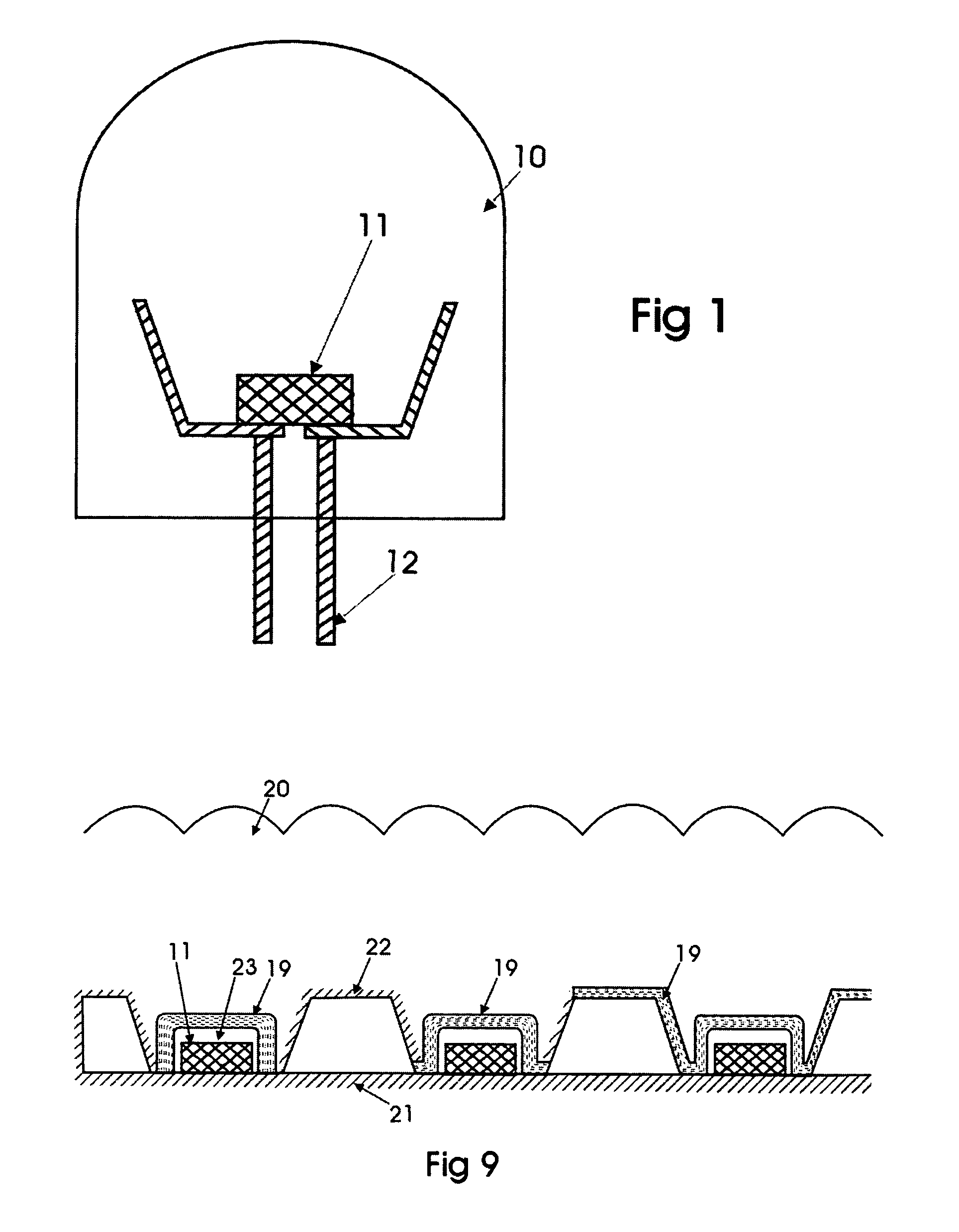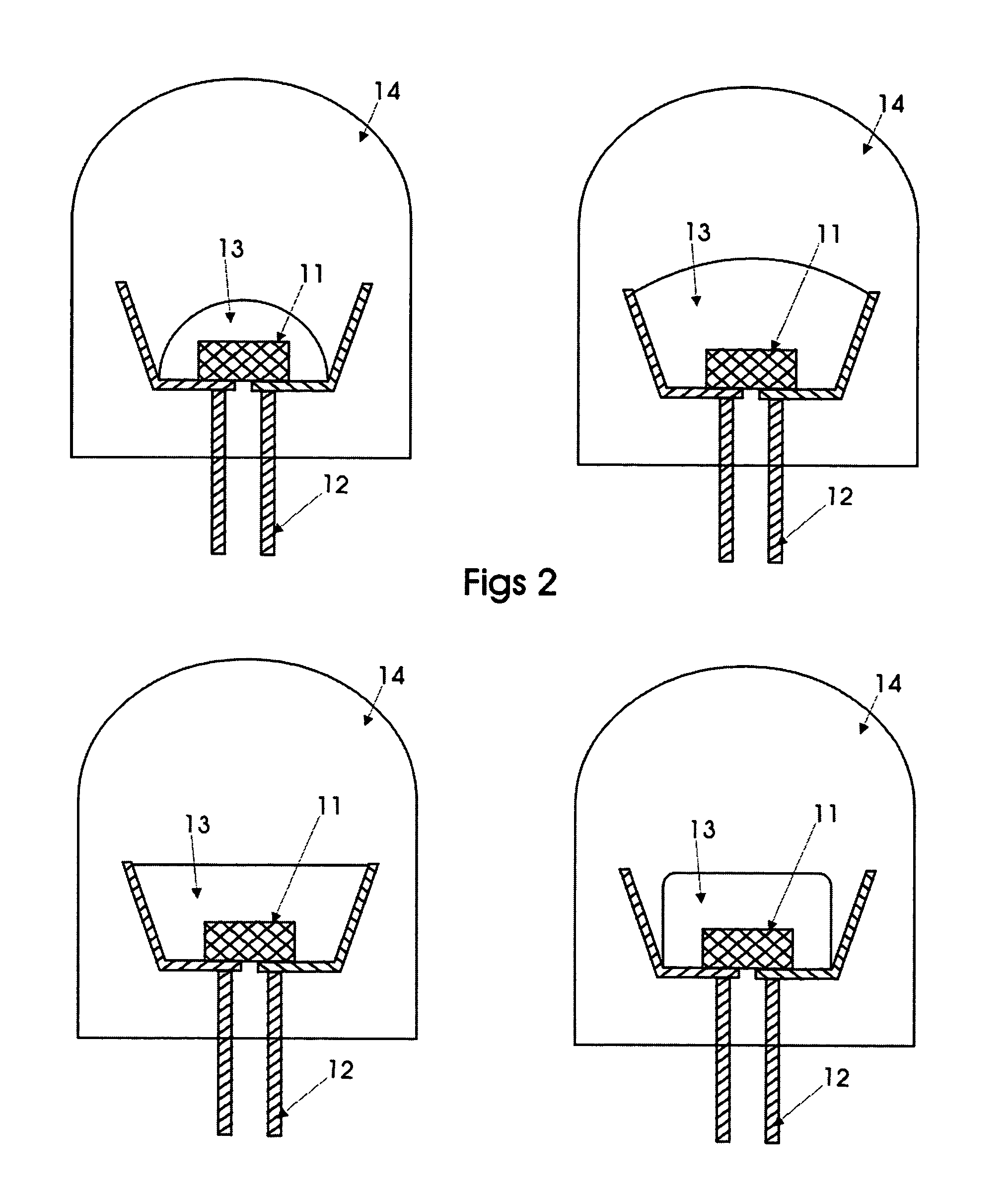Nanocomposite photonic structures for solid state lighting
a photonic structure and solid-state lighting technology, applied in the direction of discharge tube/lamp details, discharge tube luminescnet screen, cathode ray tube/electron beam tube, etc., can solve the problems of high cost, complicated driver circuitry, and difficulty in achieving high-brightness led lamps (5 mw to 1000 mw led lamps) and achieve low cost, improve white light quality, and reduce color temperature
- Summary
- Abstract
- Description
- Claims
- Application Information
AI Technical Summary
Benefits of technology
Problems solved by technology
Method used
Image
Examples
Embodiment Construction
Modalities of Operation
[0017]The present invention is applicable to various modalities of LED / phosphor operation including: a blue LED with a yellowish (or RG) phosphor; RGB phosphors with a UV LED and deep UV LED with “white” fluorescent tube type phosphors. The invention is also applicable to use with various sizes of phosphors: “bulk” micron sized phosphors, nanocrystalline phosphors (“nanophosphors”—less than 100 nm in average diameter and more preferably less than 40 nm) and the newly developed Quantum Confined Atoms (QCA) based nanophosphors which have average diameters of less than 10 nm, which are explained in detail in U.S. patent application Ser. No. 10 / 436,289 filed May 12, 2003 (the disclosure of which are hereby incorporated by reference).
[0018]Bulk phosphors are efficient when their phosphor-grain size exceeds 1 um. Nanophosphors can exist in the form of individual nanoparticles (40 nm) micron sized agglomerates comprised of individual nanoparticles, comparable in size...
PUM
 Login to View More
Login to View More Abstract
Description
Claims
Application Information
 Login to View More
Login to View More - R&D
- Intellectual Property
- Life Sciences
- Materials
- Tech Scout
- Unparalleled Data Quality
- Higher Quality Content
- 60% Fewer Hallucinations
Browse by: Latest US Patents, China's latest patents, Technical Efficacy Thesaurus, Application Domain, Technology Topic, Popular Technical Reports.
© 2025 PatSnap. All rights reserved.Legal|Privacy policy|Modern Slavery Act Transparency Statement|Sitemap|About US| Contact US: help@patsnap.com



